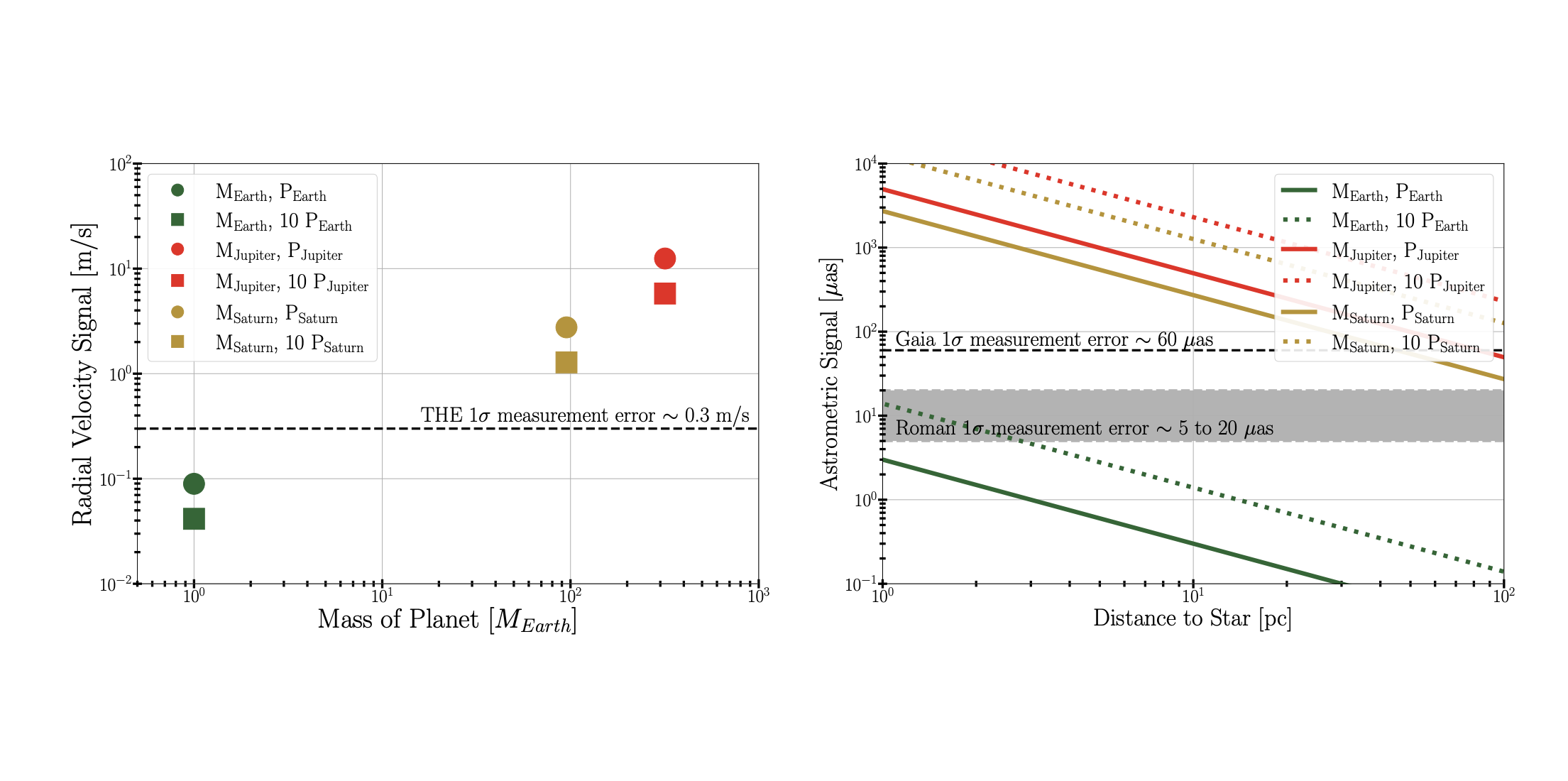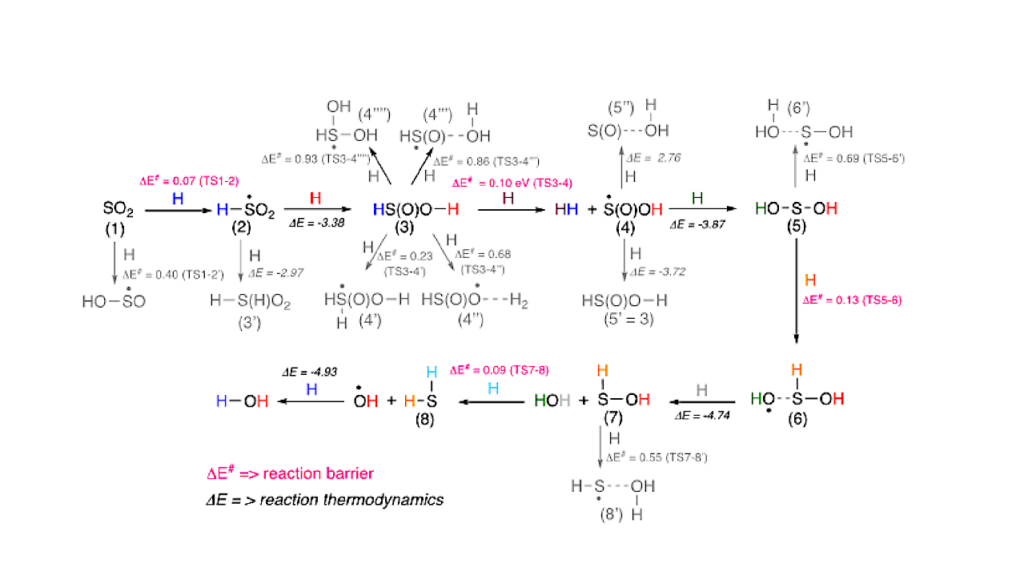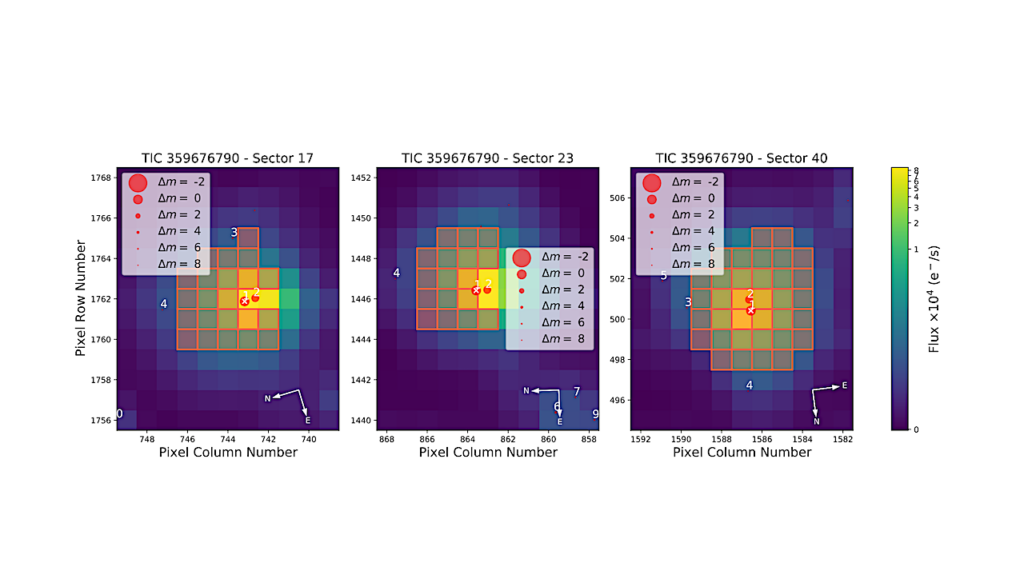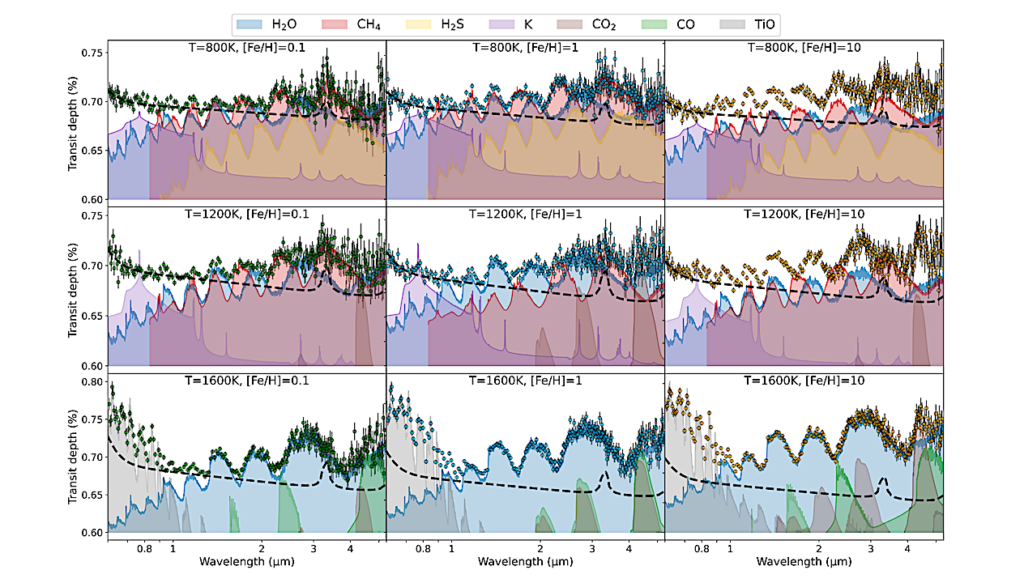Detecting Solar System Analogs Through Joint Radial Velocity/Astrometric Surveys

Earth-mass exoplanets on year-long orbits and cool gas giants (CGG) on decade-long orbits lie at the edge of current detection limits.
In our Solar System, the two CGGs, Jupiter and Saturn, played a critical role in the formation, evolution, and habitability of Earth. The Terra Hunting Experiment (THE) will take nightly radial velocity (RV) observations on HARPS3 of at least 40 bright nearby G and K dwarfs for 10 years, with a target 1σ measurement error of ∼0.3 m/s, in search of exoplanets that are Earth-like in mass and temperature. Gaia will soon release 100-200 astrometric observations of the THE stars with a 10 year baseline and ∼60 μas 1σ measurement error.
The Nancy Grace Roman Space Telescope will be capable of precision astrometry using its wide field imager (target ∼5-20 μas 1σ measurement error for bright stars) and could extend the astrometric observational baseline of Gaia to ∼25 years. We simulate and model an observing program that combines data from these three telescopes.
We find that (1) THE RVs and Gaia astrometry can detect Earth-like and CGG-like exoplanets around bright Sun-like stars at 10 parsecs and that (2) adding Roman astrometry (subject to our observing assumptions described below) improves the detection precision for CGG masses by a factor up to ∼6 and periods by a factor up to ∼5. Such a survey could provide insight into the prevalence of Solar System analogous exoplanetary architectures for bright nearby G and K dwarfs.
Daniel A. Yahalomi, Ruth Angus, David N. Spergel, Daniel Foreman-Mackey
Comments: 19 pages, 10 figures. Submitted to AAS Journals
Subjects: Earth and Planetary Astrophysics (astro-ph.EP); Instrumentation and Methods for Astrophysics (astro-ph.IM)
Cite as: arXiv:2302.05064 [astro-ph.EP] (or arXiv:2302.05064v1 [astro-ph.EP] for this version)
Submission history
From: Daniel Yahalomi A
[v1] Fri, 10 Feb 2023 05:48:20 UTC (5,733 KB)
https://arxiv.org/abs/2302.05064
Astrobiology








